Jigmet Nurzin Angmo, the 27-year-old president of the Semchan Welfare Society — a Leh-based non-profit organisation overseeing the care of 170 injured, sick and aggressive stray and abandoned dogs — remembers an incident that left an indelible impression on her.
“About 10 years ago, while driving into [Leh] town, I saw another car running over a dog. Despite the dog’s screams, the driver of that car refused to stop and help. Instead, I stopped my car to look into what happened to the injured dog,” recalls Nurzin, speaking to The Better India.
“With no idea on how to care for an injured dog, I took her to the animal husbandry department where she was treated. But we didn’t know the fate of the dog once she was treated. We didn’t know who was going to care for this dog. Given the huge population of stray dogs in Leh, the question on my mind was what were we going to do to help the many who were either injured or sick. That episode left a very strong impression on me,” she adds.
Since that episode, it was always her dream to start a non-profit or a hospital that would treat and look after stray dogs once she achieved some financial stability. Fast forward to the first COVID-19-induced lockdown in March 2020:
“During the first lockdown, I came to Leh and spent an entire year there. During this time, I realised there were so many stray dogs around that were injured and sick, and I needed to do something for them. So, I began volunteering with a local non-profit. For that entire year post-lockdown, I was engaged in rescuing stray dogs. But what I realised during this time is that one NGO can’t do the work to help the exponentially growing stray dog population in Leh and that I needed to do something more in my own capacity,” she recalls.
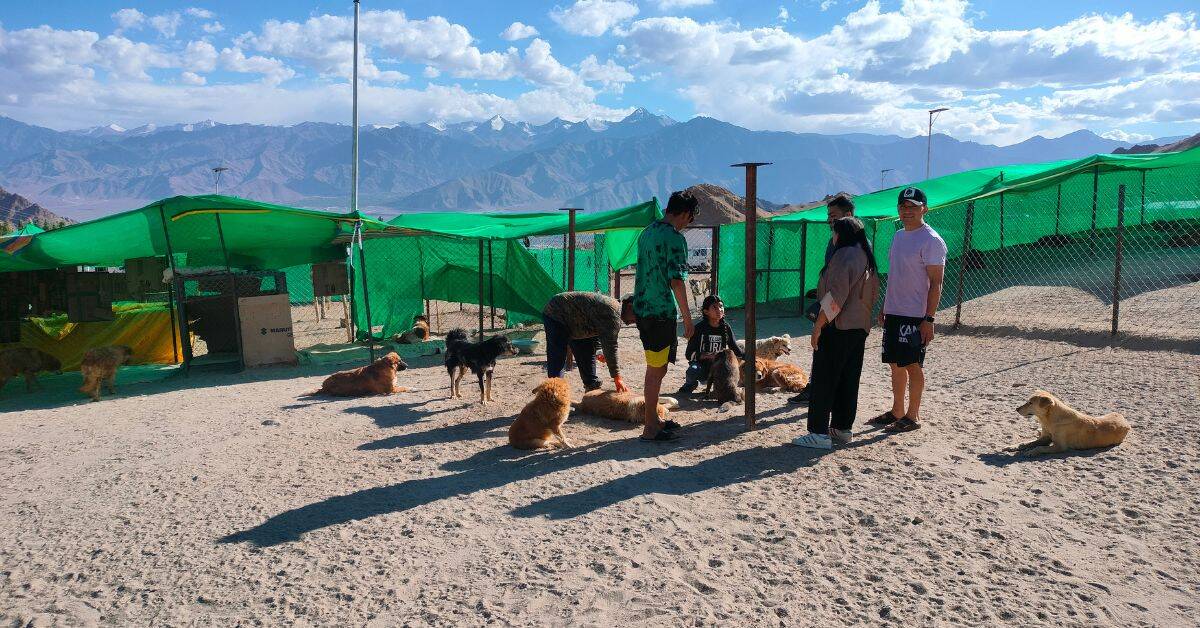
In the summer of 2022, however, she met Deena Talbot — a retired American lady and an experienced dog trainer — at her father’s Maruti Suzuki dealership in Leh.
“Sometime in late July 2022, Deena came to our car dealership to do some repairs on her Maruti Eco van. At the time, my brother and I were in the office. During our conversation, she told us about how she rescues injured and sick stray dogs, and gets them treated, sterilised and fed in her individual capacity with assistance from a local family. My brother then told her about how I was volunteering with another NGO rescuing strays,” she recalls.
“When I met Deena, I saw a person who had the requisite experience and knowledge in how to care for these dogs. She gave me the confidence to take on the responsibility of opening a shelter despite my doubts,” she adds.
Deena recalls, “Nurzin wanted to have a shelter for dogs ‘someday’. What I did was encourage her to make that day ‘now’, and she gathered other local dog lovers to form Semchan.” Deena currently plays the role of consultant, mentor, and advisor for Semchan.
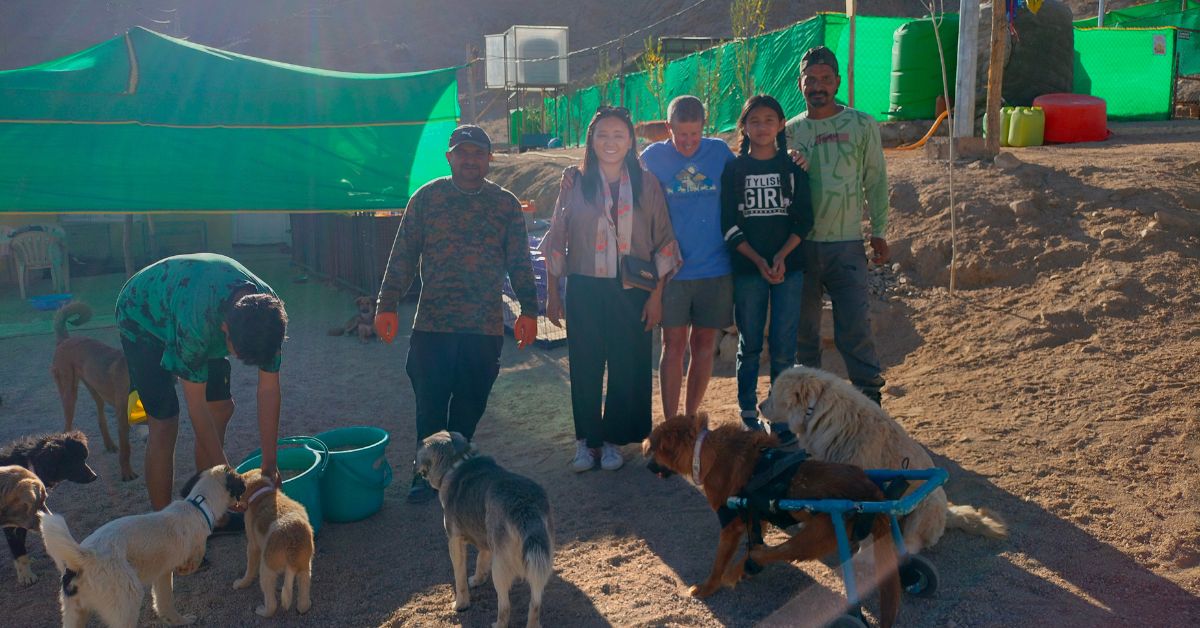
Semchan started with a small rescue shelter in the Khakshal area of Leh on land lent to them by a local family. Initially, they had 22 dogs under their care in the winter of 2022-23. But with the number of dogs under their care growing, they needed more space and moved to a one-acre plot, which they took on rent from the Sankar Gompa, a local Buddhist monastery.
“Currently, our rescue shelter houses approximately 170 stray or abandoned dogs,” says Binod Aryal, a 38-year-old Nepali caretaker hired by Semchan to care for these dogs.
Inside Semchan’s daily operations
Semchan has a team of eight workers who operate the rescue shelter daily. This includes maintaining the resident dogs, maintaining the facility, rescuing injured and ill dogs, picking up dogs for sterilisation, and operating a feeding programme for up to 700 dogs in Leh.
The shelter contains about eight pens, plus a large central area where dogs can move around. There are approximately 170 dogs but this number changes all the time.
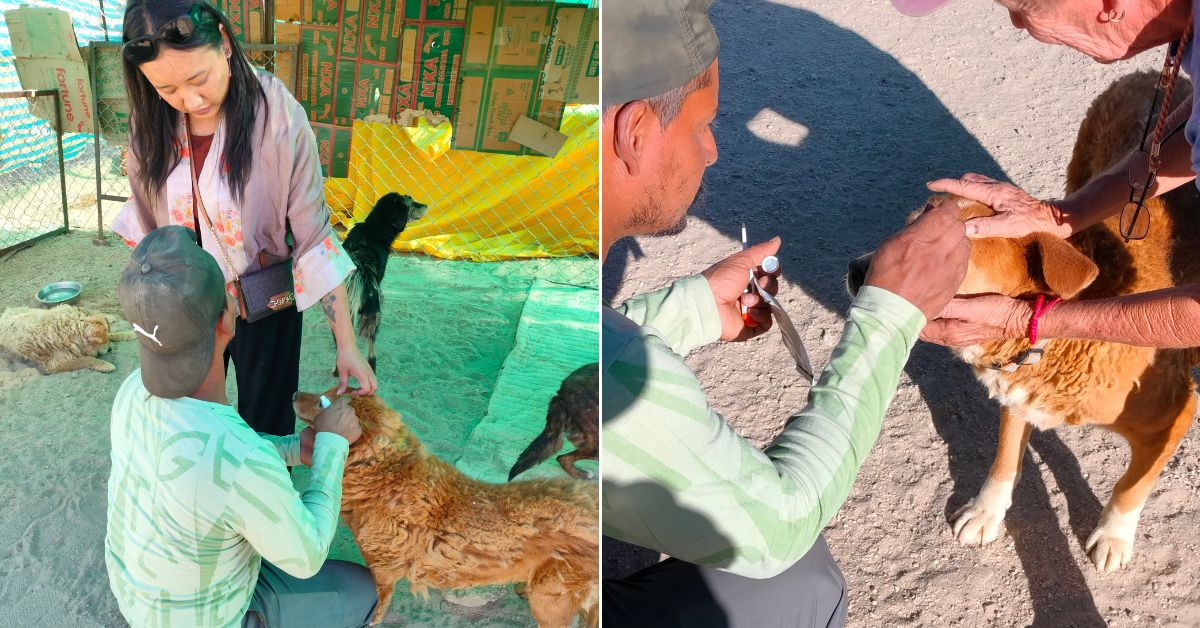
“We keep the dogs we feel will not be able to survive outside on their own and release those who can, to where we originally found them. Dogs from one pen can be released to play in the central area and then returned to their pen. Inside the pens, the dogs are mostly free to exercise and play also, and there are cages provided for those who need them,” says Deena.
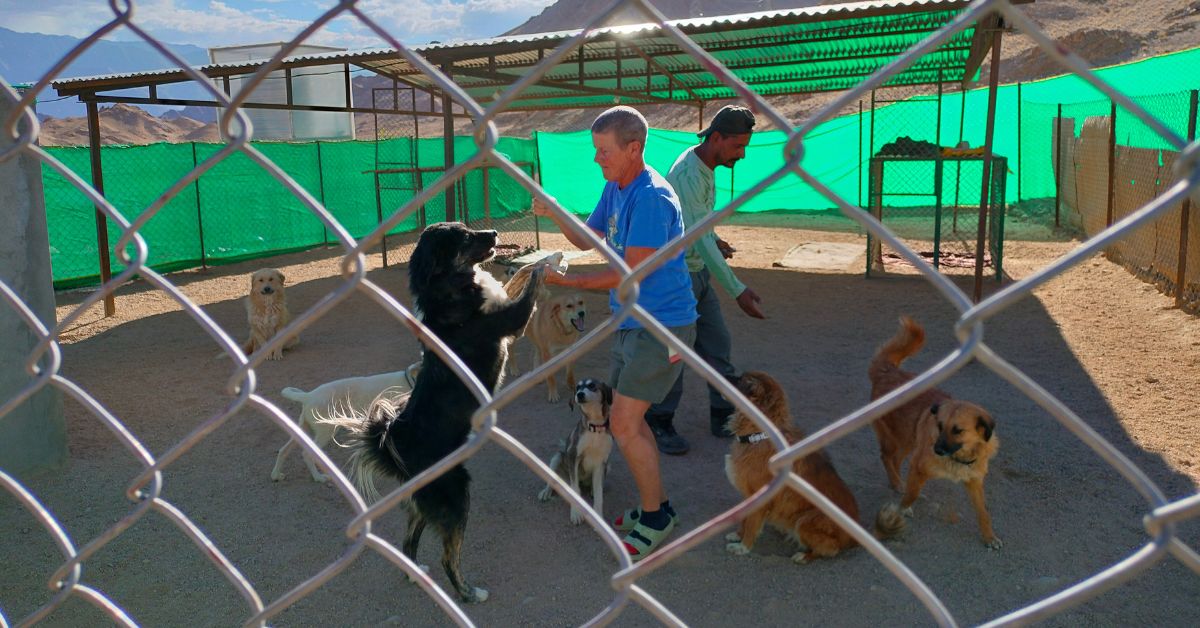
To manage these dogs, they are housed in different pens. For instance, older dogs and dogs receiving medication and treatments are grouped in the largest pen measuring 100 x 100 feet. Dogs which are younger, healthy, and more active, are housed in a separate pen. Young pups, meanwhile, are grouped in another pen. One pen is specifically dedicated to a Tibetan Mastiff. On the outside, he developed a reputation for being aggressive with people.
“His owner had to surrender him because he had bitten several people. We gave him his own pen, along with a few female dogs, and he gets along fine with them and the staff,” says Nurzin.
Semchan’s unique approach to stray dog rescue
“Our rescue service has become pretty well-known in Leh. Our phone number is available in the community, so people call the team. The caller is asked to send a picture or video of the dog needing rescue and to stay there with the dog while we come. Usually, two men take the van, which is equipped with a cage for capturing,” explains Nurzin.
“Our team uses careful and compassionate capture methods, almost always without nets or ropes. They usually cover the dog with a blanket, scoop it up into their arms, and quickly put it into the cage. Then we take the dog to the government veterinary hospital for examination and/or treatment. Once the vets release the dog for aftercare, we bring it to our Animal Rescue Centre (ARC), where we follow up with the prescribed medications, nutrition, rest, and safety, and follow-up visits to the hospital, if necessary,” says Deena.
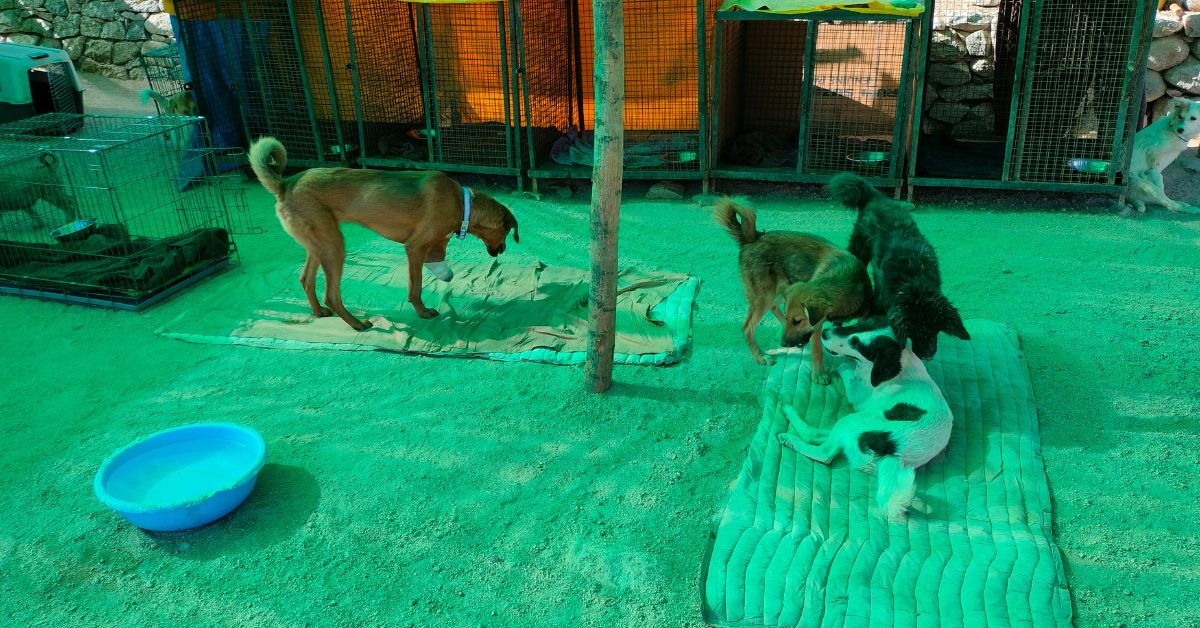
Elaborating further, Nurzin says, “Most of the rescues are injuries from road accidents. Many of these dogs have broken bones and need casts and rehab for several weeks. Some, however, need to get their leg amputated. Other cases include dogs suffering from different illnesses, etc. Occasionally there is an unusual rescue, where a dog is trapped in a hole. Our people are terrific at handling these situations.”

Recalling one such rescue episode, Deena says, “One time, some young women called us for help. A mother dog had delivered four pups in a small room in an abandoned building. She nursed them till they were about three months old, then the mother was out one day and someone plastered over the entrance and the pups were trapped inside alone.”
“When our team arrived, we assessed the problem. Finally, one member was able to squeeze his body through a tiny window into the room and hand the pups out, one at a time. We took them to ARC and cared for them. They had never really seen the light of day, or been around people or other dogs. They required a lot of attention and adjustment, and they gradually became normal little pups. Two of them died some months later for different reasons, and two of them are living just fine now at ARC more than a year later,” she adds.
Nurturing trust between dogs and humans
One of the things that stands out about this particular rescue shelter is how comfortable these dogs are in the presence of (human) strangers. On a personal visit to the shelter in September 2022, it was interesting to see how easy and comfortable it was to enter the dog pens.
Nurzin notes, “You are not the only one who has remarked on this aspect. We often take first-time visitors right inside the pens to meet the dogs. Also, quite a number of dogs are usually roaming freely in the central area and the area right in front of our little house. It is amazing to us that none of them are aggressive towards people and except for a few shy ones, they are friendly with strangers. We can’t help but feel that they feel a sense of safety with us.”
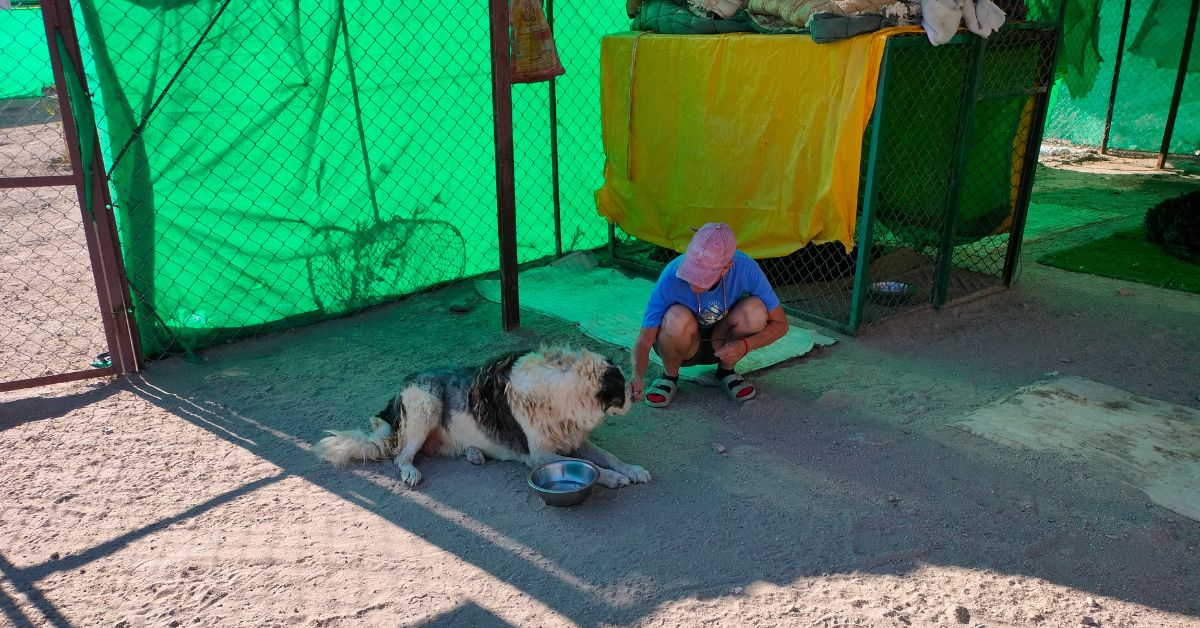
But what explains the creation of this safe environment?
“This is an important part of our culture. We start by hiring members who we have an inkling will be good with animals, and bring some love and care to the work. Then we set examples and policies to encourage those attitudes, and our managers are constantly training in the fine details of such care. We give each dog a name and keep a paper record of each one with its picture on the page. The team members use the names, and converse with each other about the progress the dogs are making, the medications they are taking, etc,” says Deena.
“We give all team members as many different duties as possible: feeding, administering medicines, cleaning cages and pens, keeping records of care, maintaining infrastructure at the facility, going out for rescues, etc. Everyone is encouraged to talk to the dogs, examine their bodies for any new problems, cuddle with them, and so on. So, a member who may not have experience with hands-on dog care will learn it by the good examples set by others,” she adds.
The challenges of mass feeding stray dogs
One of the key initiatives taken by Semchan is the feeding of dogs not just housed at the rescue shelter but across different feeding centres in Leh.
“We feed about 300 dogs in the summer months and in the last winter season, we fed about 650 (one feeding session a day) across 27 feeding stations. We prepare the food in our kitchen, consisting of rice mixed with dry dog food, chicken, and a water/milk portion to soften it,” says Nurzin.
However, many canine experts have expressed their concern about mass feeding, and how it exacerbates the growing conflict between dogs and humans.
In a past conversation with The Better India, Dr Abi Tamim Vanak, an animal ecologist and conservation biologist, said, “It’s not [necessarily] provocation, but pack formation that leads to deadly [stray dog] attacks on people. And why does pack formation happen? It happens whenever you have massive resources gathered in one place. Feeding one or two dogs is fine, but when you feed five, seven, or ten dogs at one location, that’s when pack formation occurs.”
Deena, however, disagrees with this argument.
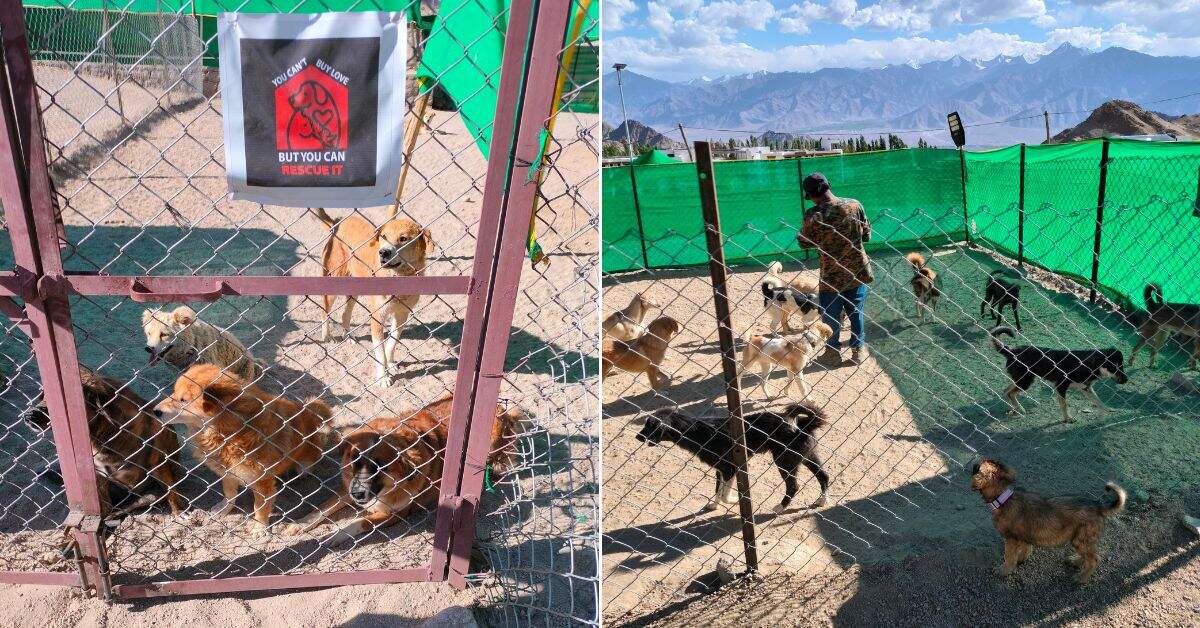
“Hungry dogs become aggressive dogs. In our experience, feeding helps in keeping the dog population calm and content and does not encourage attacks. If there had been any attacks on humans in the areas where we feed, the Government would have contacted us. We have not received any such notification. During winter, we feed between 1 pm and 5 pm so that the dogs are not hungry at night,” she argues.
But amid rising dog bite cases in the region, the Union Territory Government of Ladakh issued an order in July 2024 stating, “All armed forces establishments, hotels, homestays, restaurants, guest houses in Leh district shall strictly refrain from throwing leftover foods on the roads and other places reachable by feral dogs.” One of the reasons given for this order was that “cases of feral dog bites have gone up exponentially, thereby posing a risk to public safety and health.”
Mass feeding is a delicate issue that requires greater scientific scrutiny and examination.
Commitment to dog care and rehabilitation
Beyond paying for food and the fuel costs incurred during rescues, Semchen also incurs the cost of spaying and sterilising dogs via a private vet.
Going further, a Vet Tech comes every evening for two and a half hours to bandage the dogs. They also obtain vaccines to protect dogs from the Parvovirus [a highly contagious disease that can affect dogs] that come in from Pune. “There have been no cases of Parvo since March-April 2024,” claims Deena.
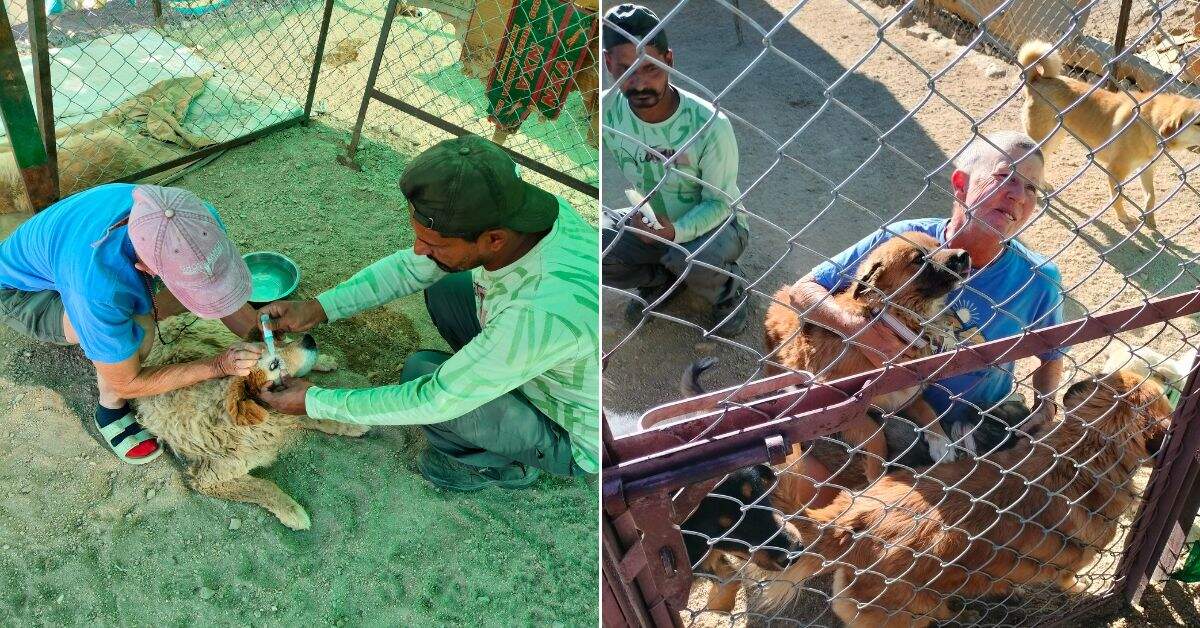
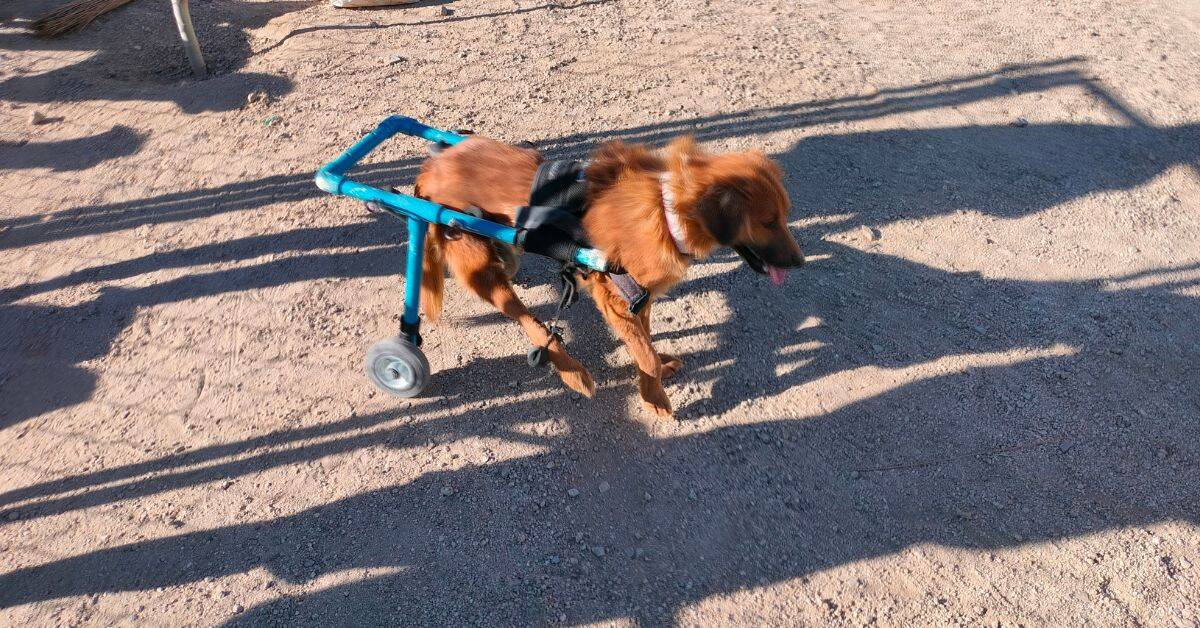
“We administer prescribed tablets, change wound dressings, apply topical medicines, and give physical therapy in some cases — such as making sure a dog exercises, or giving support to a dog learning to walk with a new injury,” adds Deena.
“We are building more shade structures and expanding the open play area. We need to build one more room soon that will become an isolation ward for recovering dogs and those suffering from diseases like Parvo, and a food storage room. We want to improve our landscaping throughout the space, which will include plants, irrigation, stone retaining walls, steps, and pathways. We also want to dig a borewell by the next tourist season,” says Nurzin.
(If you want to volunteer, please contact Arun Kumar at 9622143432. You can also follow Semchan Welfare Society on Instagram here.)
You can contribute to their efforts by donating to their account. Below are the details:
Account Holder: Semchan Welfare Society
Account No: 43403061172
Bank: State Bank of India
Branch: Sme Leh
IFSC Code: SBIN0064099
(Edited by Pranita Bhat; Images courtesy Rinchen Norbu Wangchuk)
No comments:
Post a Comment